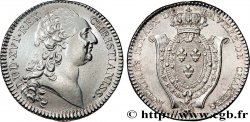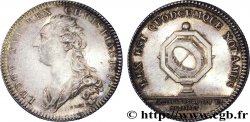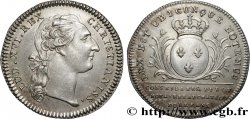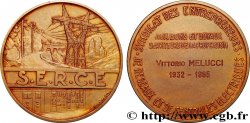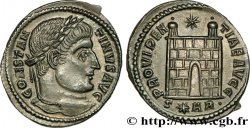fjt_079455 - NOTAIRES ROYAUX Notaires de Lyon 1715
non disponibile.
Articolo venduto sul nostro negozio
Prezzo : 38.00 €
Articolo venduto sul nostro negozio
Prezzo : 38.00 €
Tipo : Notaires de Lyon
Data: 1715
Metallo : argento
Diametro : 30 mm
Asse di coniazione : 6 h.
Orlo : striée
Commenti sullo stato di conservazione:
Très bel exemplaire
N° nelle opere di riferimento :
Diritto
Titolatura diritto : MES LES CONSERS DU ROY. NOTAIRES. DE LION.
Descrittivo diritto : Armes de France couronnées encadrées de deux anges et au-dessus d'un lion couché à gauche.
Rovescio
Titolatura rovescio : LEX. EST. QVODCVMQ. NOTAMVS..
Descrittivo rovescio : Le gnomon sur une console, au-dessous 1715.
Traduzione rovescio : (Est Loi ce que nous consignons).
Commento
Les notaires royaux étaient institués près des justices royales. Ils ne pouvaient instrumenter hors du ressort de celle auprès de laquelle ils étaient établis à l'exception des notaires au Châtelet qui avaient le privilège de pouvoir le faire dans toute la France. Comme officiers publics, ils étaient chargés de dresser les actes et contrats auxquels les parties veulent donner un caractère d'authenticité. En 1597, les tabellions, chargés de garder les minutes et de délivrer des grosses, deviennent des notaires garde notes et garde scel mais ils se confondent rapidement avec les notaires chargés de recevoir. L'édit de juillet 1682 exigeait profession de la religion catholique, attestation de bonne vie et mœurs par le curé et un examen pour être reçu notaire.
Royal notaries were established near the royal courts. They could not act outside the jurisdiction of the court in which they were established, with the exception of the notaries at the Châtelet who had the privilege of being able to do so throughout France. As public officers, they were responsible for drawing up deeds and contracts to which the parties wished to give a character of authenticity. In 1597, the tabellions, responsible for keeping the minutes and issuing gross documents, became notaries keeping notes and keeping seals, but they quickly merged with the notaries responsible for receiving documents. The edict of July 1682 required profession of the Catholic religion, attestation of good conduct and morals by the priest and an examination to be admitted as a notary
Royal notaries were established near the royal courts. They could not act outside the jurisdiction of the court in which they were established, with the exception of the notaries at the Châtelet who had the privilege of being able to do so throughout France. As public officers, they were responsible for drawing up deeds and contracts to which the parties wished to give a character of authenticity. In 1597, the tabellions, responsible for keeping the minutes and issuing gross documents, became notaries keeping notes and keeping seals, but they quickly merged with the notaries responsible for receiving documents. The edict of July 1682 required profession of the Catholic religion, attestation of good conduct and morals by the priest and an examination to be admitted as a notary








 Segnalare un errore
Segnalare un errore Stampate la pagina
Stampate la pagina Condividi mia selezione
Condividi mia selezione Fai una domanda
Fai una domanda Consegnare / vendere
Consegnare / vendere
 Descrittivo
Descrittivo